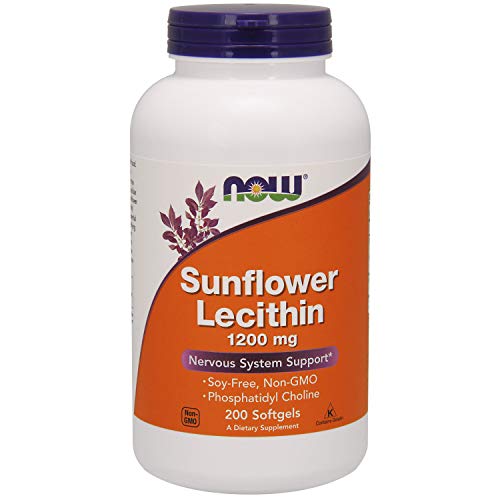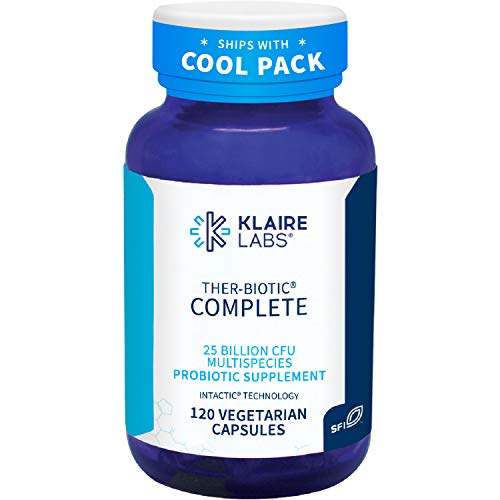
Common Breastfeeding Challenges
&
How to Handle Them
Many parents experience some challenges during their breastfeeding journey, but many are easily remedied with simple measures and management. If you are experiencing any challenges you do not have to go it alone, lactation consultants can help you identify and fully address the issue more rapidly than trying to DIY your way through pain and irritation.
Sore Nipples
Sore nipples are a common experience in breastfeeding, but are not a normal thing that must be tolerated. Some sensitivity in the early days due to hormones is to be expected, but pain is a sign that something is wrong and needs to be corrected. Nipple damage is never normal, and if you have damaged nipples you need lactation care ASAP to address healing and prevent further damage.
If you have sore nipples there are a variety of options to address this, silver nursing cups, hydrogel pads, nipple creams, etc.
The catch though, is that these comfort measures will not help if the underlying cause is not addressed.
If you have sore nipples you need a lactation assessment that looks at:
Frequency of nursing
Your baby’s latch: even if it looks good, if it doesn’t feel good there is an issue.
Your baby’s oral anatomy.
Your breast anatomy.
Breast flange fit.
Breast pump usage

Clogged Ducts
Sometimes during the course of breastfeeding you may experience a clogged duct. Most people would describe this as a hard spot on the breast, that grows increasingly tender. Clogged ducts by themselves, while painful and in need of attention, do not necessarily indicate mastitis. Addressing clogged ducts promptly, and preventing tissue damage to the breast from overly rough treatment attempts will normally help stop the progression to mastitis.
Clogged/Plugged Ducts are:
Area of the breast where milk is blocked
Results in localized redness, swelling and pain
May be warm to the touch
May have a low grade fever of less than 101.3
If clogged ducts are not resolved there is an increased risk of mastitis
Risk factors for clogged ducts include:
Poor breast pump flange fit
Poor latch
Bras that are too tight
Pressure on the breast
Not expressing milk frequently enough
A diet with too much saturated fat.
Strategies to Unplug A Clogged Duct:
Reduce inflammation with cool compresses after pumping or nursing.
Consider using anti-inflammatory
Moist Heat and Gentle Massage while nursing or pumping- don’t handle the breast with any more pressure than you would pet a feisty cat.
Apply heat for 15 minutes before nursing or pumping
When nursing aim the baby’s chin towards the plugged area (this is anecdotal but does seem to help many moms!)
Dangle Nursing: Get on hands and knees and lean over baby. This helps to elongate the breast tissue and encourage movement of lymph fluid. This does not really work for pumping though- you will flood your pump.
Vibration to break up clogs used to be recommended- it can still be used to gently encourage letdown but you need to be cautious about how intense the vibration is.
Lymphatic Breast Massage
Supportive Treatment Options:
Probiotics to reduce the risk of infections including Thrush.
Megadoses of Vitamin C 3000-5000 mg a day may be considered. This will help the body preemptive fight any infection.
Lecithin Supplements of 1200 mg 3-4 times a day may reduce clogs but may cause gut inflammation. Choline is preferred but takes longer to work.
Happy Ducts Herbal Tincture can be considered.
Recommended Products to Support Parents with Clogged Ducts or Mastitis
My all time favorite product for addressing breast health concerns like this is the Lactation Hub Breast Health+ Probiotic: https://lactationhub.com/breasthealth-pregnancy-breastfeeding-probiotic-with-choline-and-prebiotics/
Clogged ducts are common, but if they are occurring frequently you need to be seen by a lactation consultant to determine why they are occuring and to put a plan in place to prevent them in the future.
Castor Oil Packs for Clearing a Clogged Duct
Castor Oil Packs
Castor Oil Packs are a great way to reduce inflammation and clear a clogged duct with supplies available as close as your local pharmacy!
Supplies needed:
Soft cloth
Castor Oil (buy in the laxative section of the pharmacy)
Saran wrap
Heat pad/Hot water bottle
Directions:
Soak a small piece of soft cloth in castor oil, large enough to cover the area of the clogged duct.
Lay the soaked cloth on the breast in the area of the clog, avoiding the nipple.
Cover the cloth in saran wrap
Apply the heat pad or hot water bottle for 15-20 minutes
Repeat 4 times per day for 3 days until the clog has cleared.
Monitor for symptoms of infection and seek medical care if they develop.
Mastitis
Same symptoms as a plugged duct but:
Pain is more intense
May have red streaks radiating from the area
May have a fever of more than 101.3
May cause general feelings of malaise (often reported as feeling like you might be sick with the flu)
Mastitis is the result of opportunistic infection from poor milk removal or nipple trauma, or inflammation caused by milk leaking into the tissue surrounding the alveolar complex. Often times mastitis occurs due to issues related to latch or breast flange fit, resulting in poor drainage of the breast. If the issues with your baby's latch or your breast flange fit are not addressed and properly resolved you are at risk for recurrent problems. If you are unsure of what is causing the issue skilled lactation care can help you identify the underlying problems and create a care plan to address it.
When Dealing with Mastitis It’s Important To Address The Inflammation and Work Closely with A Skilled IBCLC to Reduce Risk Factors To Prevent Recurrent Mastitis.
Use anti-inflammatory measures such as cool compresses, ibuprofen, and probiotics
Rest, this infection is hard on the body, and your recovery will be supported by rest.
Empty the breast- milk removal is always important, but during mastitis this is extremely important as milk stasis will likely result in further complications. You want to remain on your established pumping and nursing schedule (prioritizing nursing where possible if baby is effective at latching) unless directed by your IBCLC.
If you develop symptoms of mastitis call your health care provider to discuss the need for antibiotics or other medical treatment.

Milk Blebs
Milk blebs are tiny blockages of a nipple pore, either by skin growing over the pore, or hardened biofilm being stuck in the pore, that result in pain and inability to drain the milk duct properly. Milk blebs can be very frustrating as such a tiny visual problem can be so painful! These tiny milk blisters typically appear as a tiny white spot on the nipple, that may bulge forward when pressing back on the areola or breast tissue towards the chest wall. It is important that milk blebs are safely addressed quickly, to reduce the risk of infection to the nipple or mastitis.
Treatment Strategies:
Address concerns for nipple health and milk removal management by working with an IBCLC
Use moist wound healing with saline soaks and olive oil to keep the skin from hardening- this will typically allow the milk bleb to naturally pass.
If milk blebs recur full evaluation for disruption of the microbiome and possible subclinical infection via labwork may be necessary.

Thrush
Even mentioning thrush can bring about memories of the pain and discomfort associated with this opportunistic overgrowth of candida albicans on the nipples and in the baby’s mouth.
Thrush manifests with the following symptoms:
Sore nipples with sudden onset
Persistent sore nipples
Cracked nipples
Burning nipples
Deep breast pain
Shooting pains during and after feedings
Flaky skin, shiny skin or rash with blisters
Reddened nipples
So what makes thrush so awful to identify and treat? Those same symptoms can be found in cases of bacterial infection, and trauma to the nipple from latch issues and a bad pump flange fit. Thrush can be resistant to traditional treatments such as nystatin, and some of the topical treatments can cause additional irritation of the skin. Some treatments that were commonly used in the past, like gentian violet, are now known to have possible concerns of being carcinogenic.
It is incredibly common for thrush to be “visually diagnosed” on social media when a mom desperate for relief from the pain posts a picture asking for help. The problem here is that without a full health history, and trained eyes assessing the full situation, this is likely to result in improper identification and inadequate treatment. In order to properly handle a possible thrush infection we need to determine what is going on, get the proper medical professionals involved if necessary, and address the underlying reason you have this opportunistic infection.
Thrush is often misdiagnosed when the actual cause of the issue is bacterial. With oral thrush treatment we can even see a temporary reduction in symptoms only to have the issue reoccur. This is where proper evaluation and
With proper management and lactation care thrush can be resolved, and pain free nursing and pumping restored relatively quickly.
Nursing Strikes
Nursing strikes can be an incredibly frustrating experience, with active management to protect the milk supply, detective work to figure out what has caused the baby to stop nursing, and creativity to coax the baby back to the breast. With younger infants they are normally short lived, but with older infants and young toddlers they can last for over a week or more, and it can be very stressful on the whole family.
Common causes of nursing strikes:
stuffy nose
teething
sore throat
ear pain/infection
bottle preference
reaction to mother’s response to biting
stress related to sleep training/being left to cry it out
family stress
separation from nursing parent
Strategies to end the nursing strike:
Identify the cause and resolve the issues
lots of snuggles and supportive parenting
skin to skin contact
make the breast available but don’t force anything
offer the breast to a sleeping baby
remove other options for the baby to satisfy their innate need to suck., using cups or syringes to feed the baby to meet their needs for nutrition.
And my personal favorite:
Peer pressure! Babies love to mimic what they see, and jealousy is an emotion they are incredibly well acquainted with. Many nursing strikes can be ended by taking the baby to a breastfeeding support group or play group where older babies are openly nursing.
Sometimes the act of seeing another baby nursing is enough to inspire the nursing-striker to come back to the breast happily.
The key to outlasting the nursing strike is to protect the milk supply during this time by pumping or hand expressing so that at the resolution of the nursing strike there are not supply issues to contend with.





